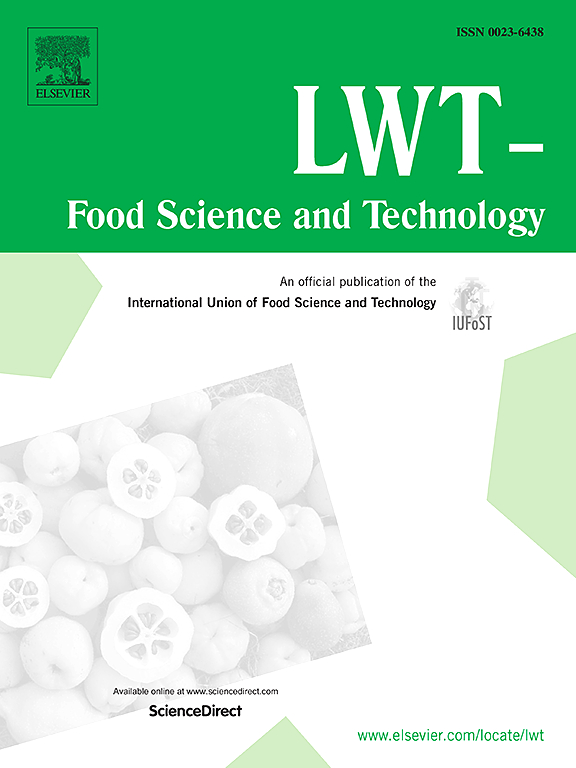Separation and identification of microbial enzymes on cereal grains/oilseeds and their activity assessment and effects on the quality of processing products - A comprehensive review
IF 6
1区 农林科学
Q1 FOOD SCIENCE & TECHNOLOGY
引用次数: 0
Abstract
Grains/oilseeds and their processing by-products are readily colonized by a diverse and complex microbial community. This microbial community actively interacts with plants by secreting various metabolites through every process, from seed to maturation, harvesting, processing and storage. It is a major driver in the spoilage of final products and bulk storage feedstocks such as wheat, corn, and legumes. Recent studies indicate that enzymes secreted by microbes significantly impact the quality of grains/oilseeds, as well as their subsequent processing products. Current analytical studies on microbial enzymes associated with grains/oilseed surfaces primarily focus on specific species. Seeds in fields or storage are exposed to dynamic and diverse microbial communities, leading to uncertainties in microbial protein sources and inaccuracies in protein identification. This hinders our ability to develop targeted preventive measures against microbial damage. Moreover, the regularity of distribution and the activity assessment of these microbial enzymes will also affect the decision-making for final preventive measures. Consequently, it is of great significance to evaluate the hydrolytic activities of the enzymes and identify the species and sources of relevant enzymes in attack, invasion, and colonization. This review provides a comprehensive overview of the impact of microbial origin enzymes on grain/oilseed and their proteomic analysis strategies, as well as the limitations and challenges in the current methods.
谷物/油籽微生物酶的分离鉴定、活性评价及其对加工产品质量的影响综述
谷物/油籽及其加工副产品很容易被多样化和复杂的微生物群落定植。从种子到成熟、收获、加工和储存,这些微生物群落通过分泌各种代谢物与植物积极相互作用。它是最终产品和大宗储存原料(如小麦、玉米和豆类)变质的主要驱动因素。最近的研究表明,微生物分泌的酶对谷物/油籽及其后续加工产品的质量有显著影响。目前对与谷物/油籽表面相关的微生物酶的分析研究主要集中在特定物种上。种子在田间或贮藏中暴露于动态和多样化的微生物群落中,导致微生物蛋白质来源的不确定性和蛋白质鉴定的不准确性。这阻碍了我们开发针对微生物损害的针对性预防措施的能力。此外,这些微生物酶的分布规律和活性评估也会影响最终预防措施的决策。因此,评价这些酶的水解活性,确定相关酶的种类和来源在攻击、入侵和定殖过程中具有重要意义。本文综述了微生物源酶对谷物/油籽的影响及其蛋白质组学分析策略,以及现有方法的局限性和挑战。
本文章由计算机程序翻译,如有差异,请以英文原文为准。
求助全文
约1分钟内获得全文
求助全文
来源期刊

LWT - Food Science and Technology
工程技术-食品科技
CiteScore
11.80
自引率
6.70%
发文量
1724
审稿时长
65 days
期刊介绍:
LWT - Food Science and Technology is an international journal that publishes innovative papers in the fields of food chemistry, biochemistry, microbiology, technology and nutrition. The work described should be innovative either in the approach or in the methods used. The significance of the results either for the science community or for the food industry must also be specified. Contributions written in English are welcomed in the form of review articles, short reviews, research papers, and research notes. Papers featuring animal trials and cell cultures are outside the scope of the journal and will not be considered for publication.
 求助内容:
求助内容: 应助结果提醒方式:
应助结果提醒方式:


